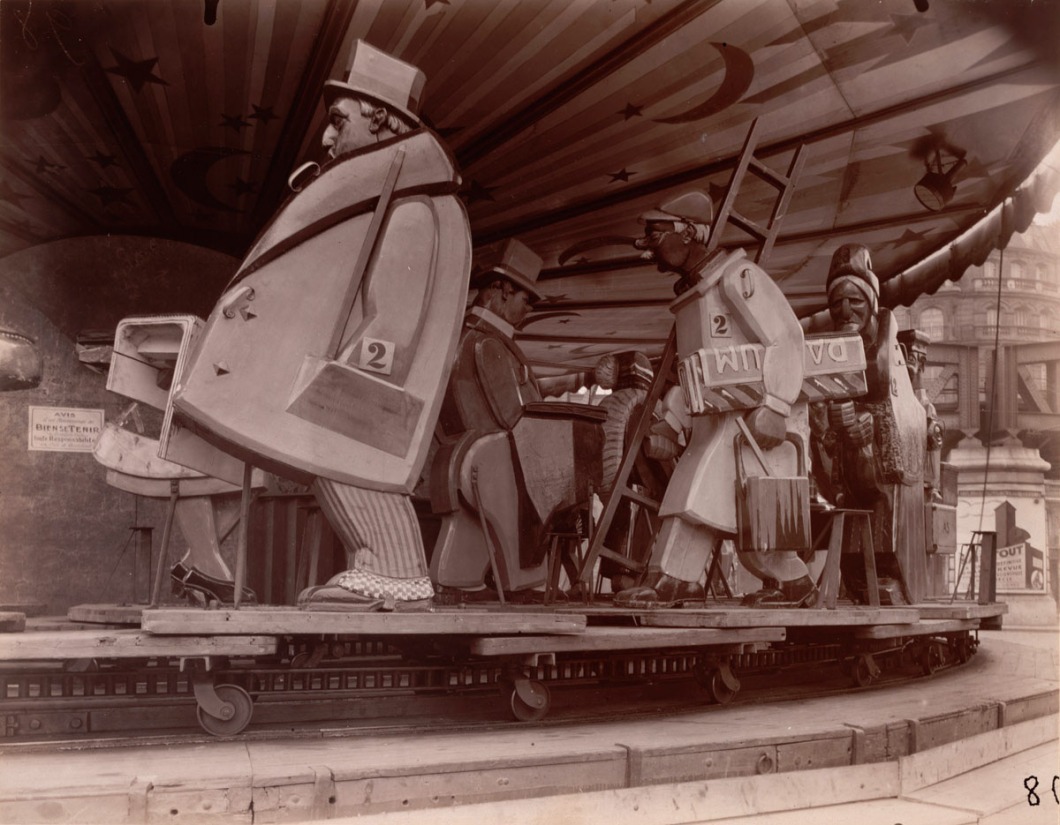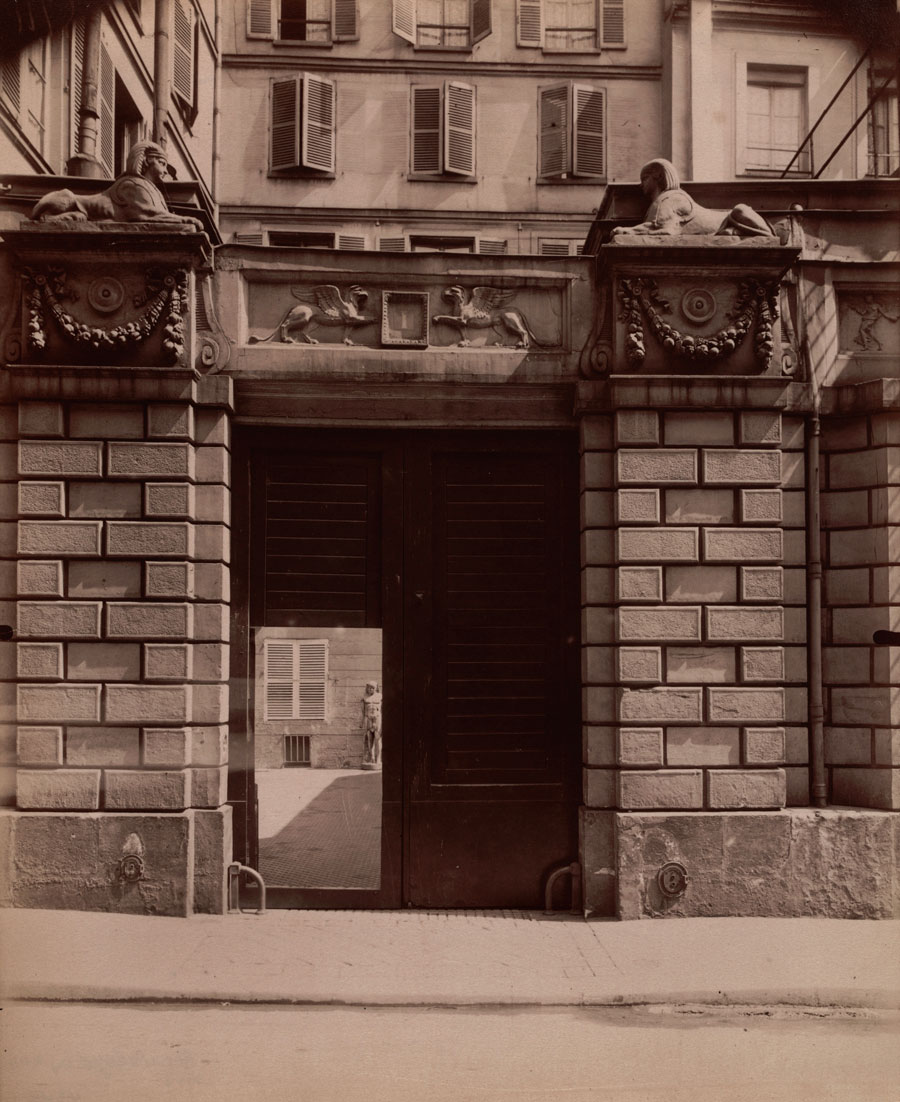














French photographer. An only child of working-class parents, he was orphaned at an early age and went to sea. Determined to be an actor, he managed to study at the Conservatoire d’Art Dramatique in Paris for a year but was dismissed to finish his military service. Thereafter he acted for several seasons in the provinces but failed to distinguish himself and left the stage. An interest in painting but lack of facility led him to take up photography in the late 1880s. At this time photography was experiencing unprecedented expansion in both commercial and amateur fields. Atget entered the commercial arena. Equipped with a standard box camera on a tripod and 180×240 mm glass negatives, he gradually made some 10,000 photographs of France that describe its cultural legacy and its popular culture. He printed his negatives on ordinary albumen-silver paper and sold his prints to make a living. Despite the prevailing taste for soft-focus, painterly photography from c. 1890 to 1914, Atget remained constant in his straightforward record-making technique. It suited the notion he held of his calling, which was to make not art but documents.
By 1891 Atget had found a niche in the Parisian artistic community selling to painters photographs of animals, flowers, landscapes, monuments and urban views. In 1898 he began also to specialize in documents of Old Paris, to satisfy the popular interest in preserving the historic art and architecture of the capital. Working alone, Atget accumulated a vast stock of photographs of old houses, churches, streets, courtyards, doors, stairs, mantelpieces and other decorative motifs. He marketed these images not only to artists but also to architects, artisans, decorators, publishing houses, libraries and museums. While Atget made his name doing this work, much of his production was routine; his artistic fame came from his pursuit of this approach.
The oeuvre demonstrates this variance throughout; while Old Paris was Atget’s main theme, as he worked he occasionally made photographs that seem more picturesque, imaginative or formally inventive than others. Besides these individual, idiosyncratic pictures, Atget also made some series of related images that denote a more vivid artistic presence. These include street scenes and the petits métiers series (1898–1900); vehicles, bars, markets, boutiques, gypsies, the quais and ‘zone’ (1910–14); prostitutes, shop displays and street circuses (1921–7); and the churches, châteaux and gardens of the Parisian environs, especially Versailles (from 1901), Saint-Cloud (from 1904) and Sceaux (1925; e.g. Parc de Sceaux, March, 8 a.m., New York, MOMA).
The tendency towards personal autonomy and free expression grew more marked as Atget’s career progressed. Around 1910 he made seven carefully composed albums that he sold to the Bibliothèque Nationale (see Nesbit), and in 1912 he broke off a continuing assignment to survey the topography of the central wards of the old city for the Bibliothèque Historique de la Ville de Paris. His pictorial production continued to fall during World War I, when he photographed hardly at all.
In 1920 Atget sold most of his negatives of Old Paris to the government; he had completed that section of his work. While he retained an interest in the same genres of subject-matter thereafter, he increasingly chose different aspects to depict. Whereas his energies had been channelled into the relatively methodical production of good, serviceable documents from 1898 to 1914, from 1922 until his death Atget more often made pictures whose usefulness as reports to architects or decorators was questionable. The metaphorical power, suggestive mood and pictorial innovation in the late work appealed rather to an audience of poets and painters such as Man Ray, Jean Cocteau, Robert Desnos (1900–45) and other Surrealists, who hailed the photographer as a ‘naive’ whose straight yet sentient attitude had analogies with their own.
In fact Atget’s art has little to do with Surrealism; it expresses his acutely intelligent assessment of what he valued through the medium of photography. The early morning light on a Parisian street, the palpable atmosphere enveloping a pool at Saint-Cloud and the disarming gesture of a mannequin reflected as if in the street on a shop-window, were as directly and unselfconsciously apprehended and with the same seriousness, humility and humanity as the door-knockers and apple trees photographed early on. If the late works reveal the artist’s own sensibility as much as the ostensible motif, it was not Atget’s idea of his function that had changed but his vision of what was worth photographing.
Atget’s best work is a poetic transformation of the ordinary by a subtle and knowing eye well served by photography’s reportorial fidelity. His transcendent, haunting works transposed photography’s function from the arena of 19th-century commercial documentation into the realm of art. This legacy, posthumously heralded as paralleling the rejection by ‘art’ photographers of Pictorialism and the return to the straight, unmanipulated approach, passed into the tradition of modern photographic history through the efforts of the American photographer Berenice Abbott, who met Atget in 1925 and who acquired his estate at his death. It is now owned by the Museum of Modern Art in New York.
Maria Morris Hambourg
From Grove Art Online
From Grove Art Online

***** merci
AntwortenLöschen